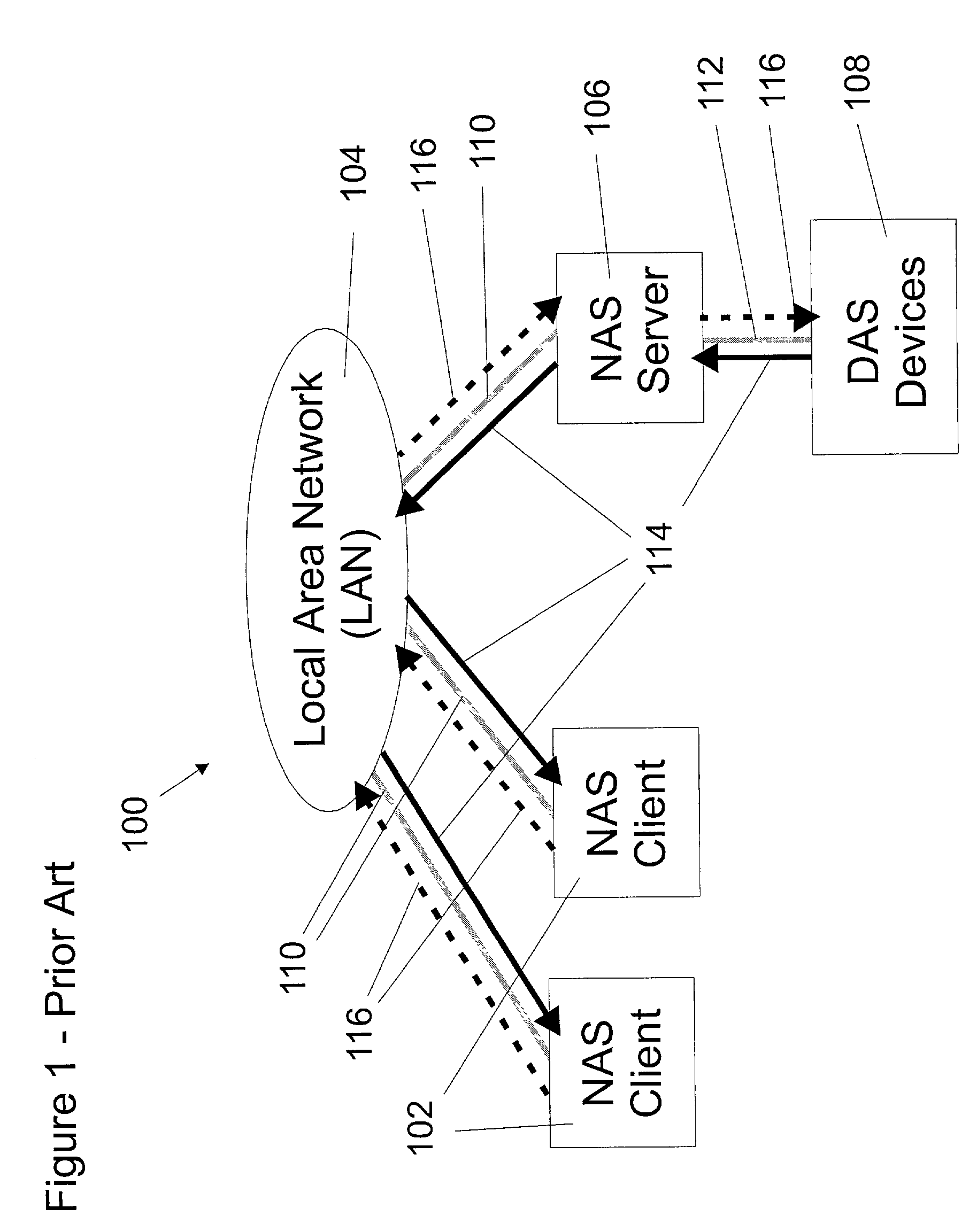Storage area network file system
a file system and storage area technology, applied in the field of computer file systems, can solve the problems of metadata caching drastically affecting the performance of the file system, the cache becomes dirty, and the file system may flush or invalidate the cache for specific byte-ranges of the cached files, so as to achieve fast data reads
- Summary
- Abstract
- Description
- Claims
- Application Information
AI Technical Summary
Benefits of technology
Problems solved by technology
Method used
Image
Examples
Embodiment Construction
[0083]The present invention is a distributed file system that provides users and application programs with transparent access to shared data found on storage devices attached directly to a network. For purposes of this application, the present invention will be referred to as the Nasan file system. This file system incorporates two technologies into a single file system: network attached storage (NAS) and storage area networks (SANs).
[0084]Referring to FIG. 4, a file sharing environment 140 is shown that utilizes a file system of the present invention. A Nasan environment 140 consists of Nasan client computers 142, SAN-attached devices 126, and at least one NAS server 106. Nasan clients 142 are connected to the NAS server 106 via network-based I / O interface links 110 connected to the LAN 104. The LAN 104 consists of network components such as routers, switches, and hubs.
[0085]The Nasan clients 142 and NAS server 106 connect to the SAN-attached devices 126 via an I / O interface capabl...
PUM
 Login to View More
Login to View More Abstract
Description
Claims
Application Information
 Login to View More
Login to View More - R&D
- Intellectual Property
- Life Sciences
- Materials
- Tech Scout
- Unparalleled Data Quality
- Higher Quality Content
- 60% Fewer Hallucinations
Browse by: Latest US Patents, China's latest patents, Technical Efficacy Thesaurus, Application Domain, Technology Topic, Popular Technical Reports.
© 2025 PatSnap. All rights reserved.Legal|Privacy policy|Modern Slavery Act Transparency Statement|Sitemap|About US| Contact US: help@patsnap.com



